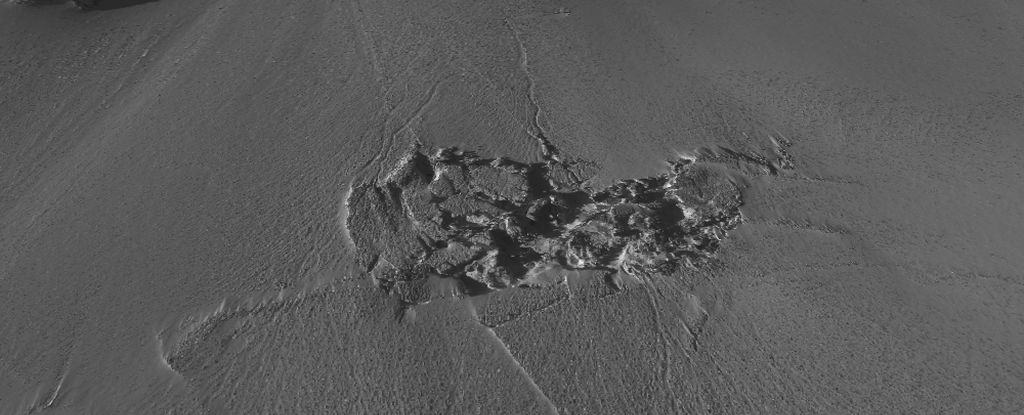
A significant event in 2014 saw approximately 90 million cubic meters of meltwater surge from beneath the Greenland ice sheet, leading to a remarkable flood that fractured the ice surface and released water into the atmosphere. This unprecedented occurrence marks the first documented instance of such a phenomenon in Greenland, offering critical insights into the ongoing changes as the ice sheet continues to melt.
The study, led by glaciologists including Jade Bowling from Lancaster University, reveals that the existence of subglacial lakes beneath the ice sheet is a relatively recent discovery. “There is still much we don’t know about how they evolve and how they can impact the ice sheet system,” Bowling stated. This finding underscores the importance of understanding how frequently these lakes drain and the implications for the surrounding ice.
Uncovering the Dynamics of Meltwater
Greenland’s ice sheet, which covers a substantial portion of the island and reaches a maximum thickness of over 3 kilometers (1.9 miles), contains vast amounts of freshwater. If it were to melt completely, global sea levels could rise by an estimated 7.4 meters (24 feet). Recent advancements in radar technology have enabled scientists to visualize the complex environment beneath the ice, revealing that liquid lakes are not only common but also play a dynamic role in ice sheet behavior.
Bowling and her team’s pivotal research utilized satellite data from 2014 to analyze a significant drop in elevation over a 2 square kilometer area. This region experienced an abrupt elevation decrease of 85 meters, equivalent to the height of a medium-sized skyscraper. Prior to this event, the area had been rising as meltwater accumulated beneath it, forming a dome. The sudden drainage of this water led to the collapse and subsequent flooding.
The findings also indicated that approximately 1 kilometer downstream from the initial site, the surface of the ice had become heavily fractured. Large ice boulders, some up to 25 meters high, were scattered across the surface, while a nearby 6-square-kilometer area had been scoured clean by the flowing water.
Bowling noted, “When we first saw this, because it was so unexpected, we thought there was an issue with our data.” However, further analysis confirmed that they were observing the aftermath of a massive flood from beneath the ice, a phenomenon previously unrecorded.
Implications for Future Research
As Greenland’s ice sheet continues to melt at an accelerated pace, understanding the dynamics of subglacial hydrology becomes increasingly vital. Amber Leeson, another glaciologist from Lancaster University, emphasized the study’s importance. “What we have found has taught us new and unexpected things about the way that ice sheets can respond to extreme inputs of surface meltwater,” she said. This research highlights the need to deepen our understanding of the complex hydrological systems at play beneath the ice.
The implications of these findings extend beyond academic curiosity. With climate change driving rapid alterations to the ice sheet, the ability to predict how these changes will impact global sea levels is crucial. The research underscores the necessity for ongoing monitoring and investigation of these hidden hydrological processes.
Published in Nature Geoscience, this study represents a significant step forward in understanding the intricate relationships between meltwater dynamics and ice sheet stability, adding a new dimension to our comprehension of climate change and its global ramifications.







